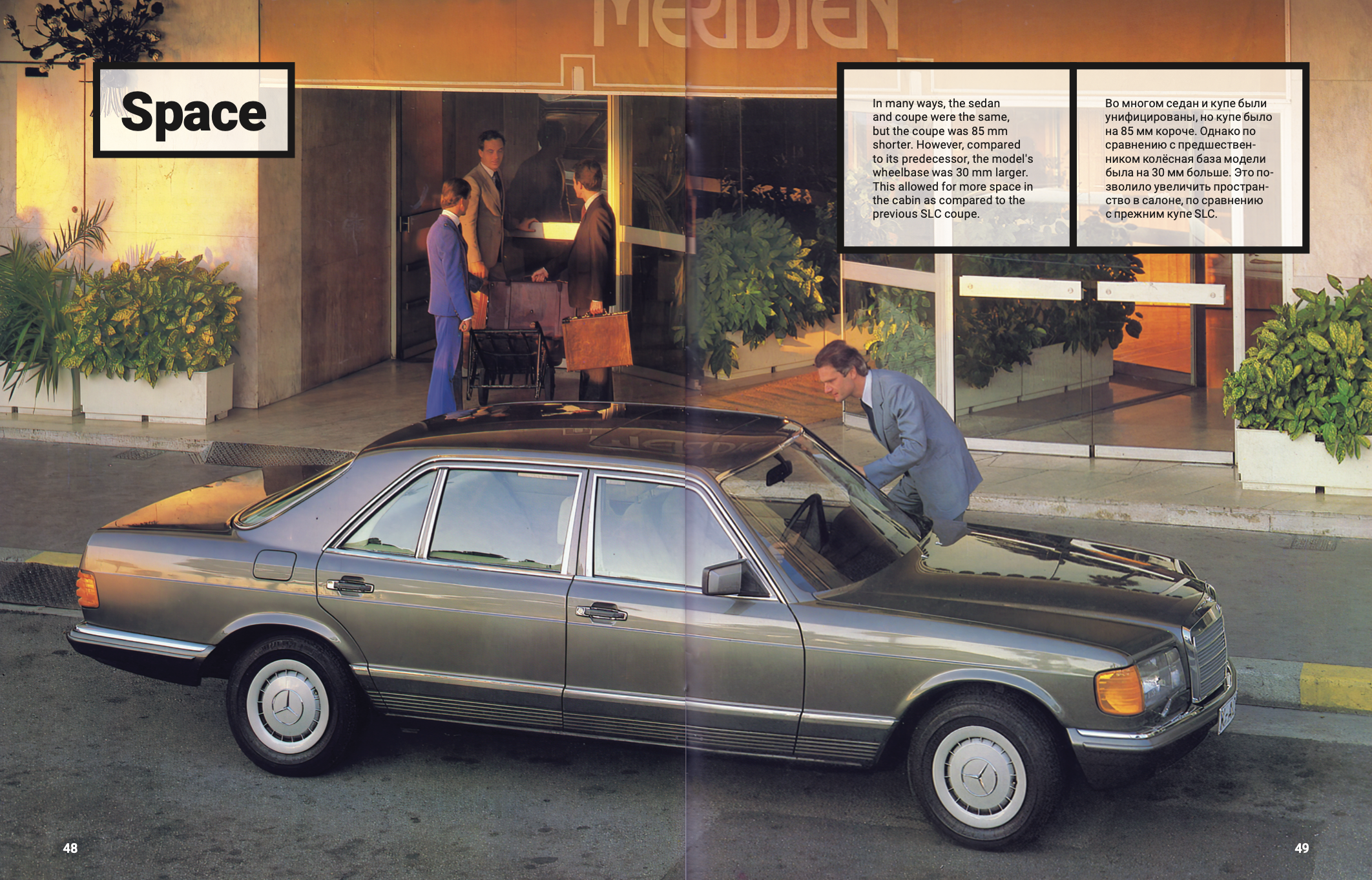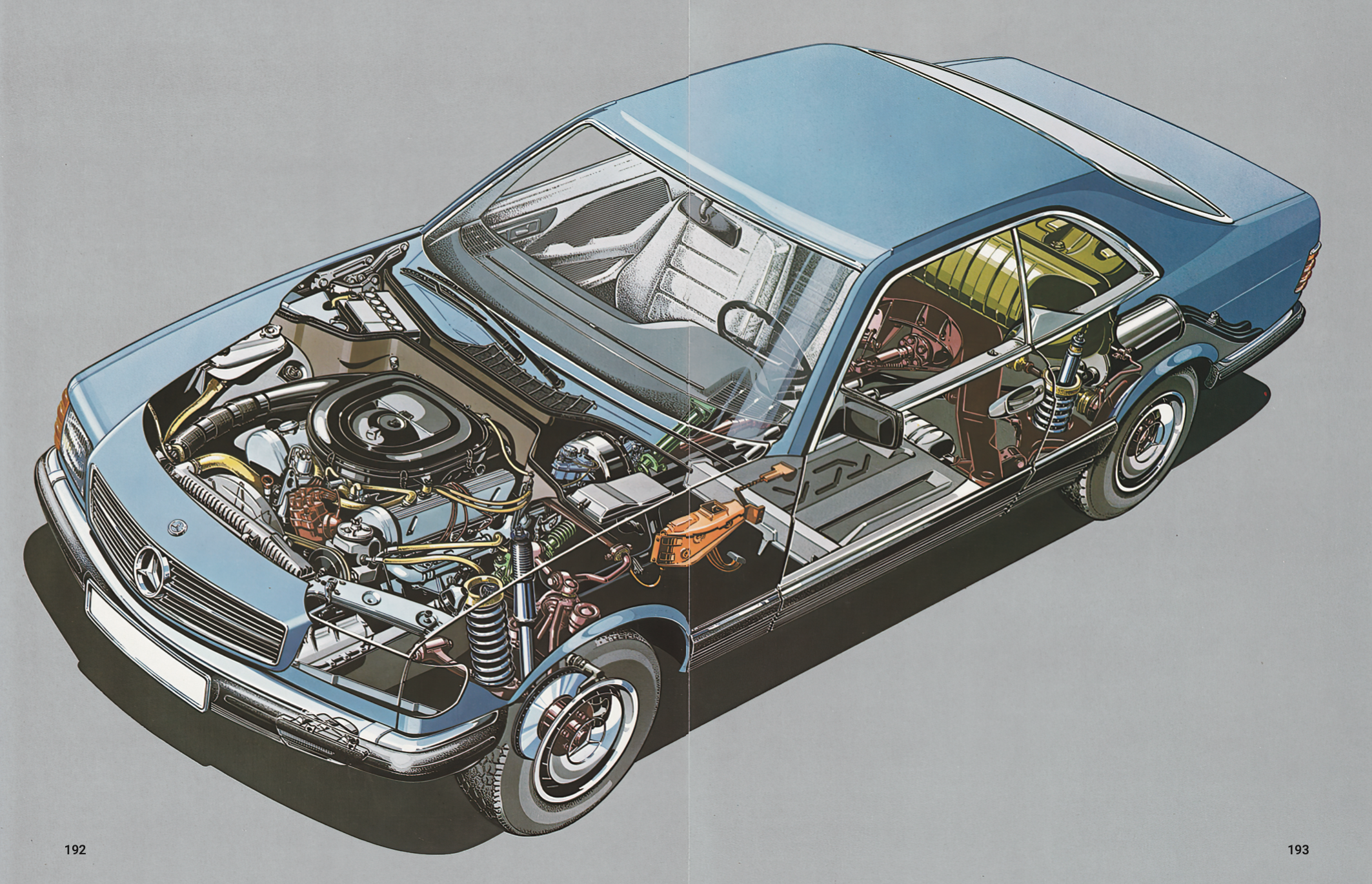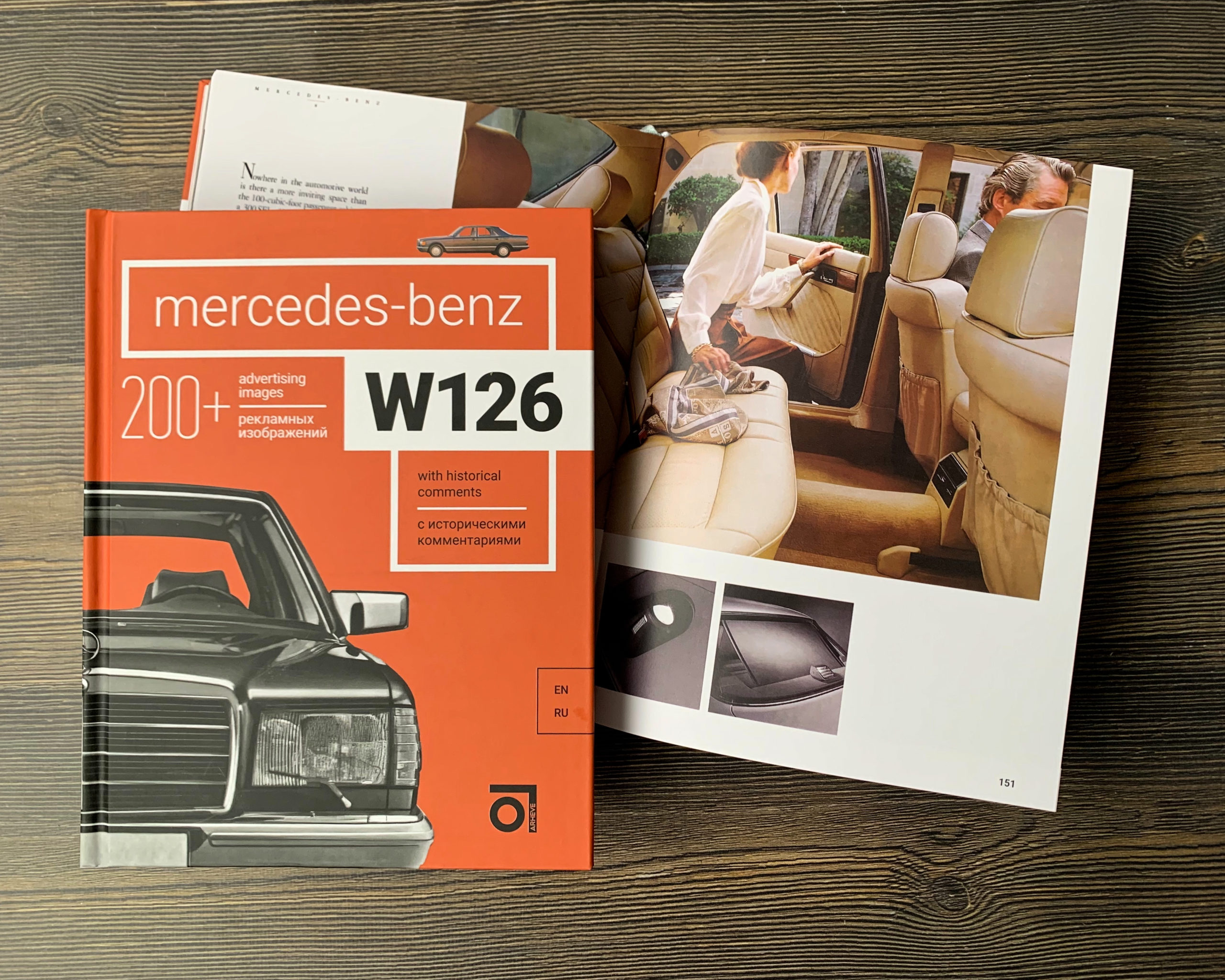Description
Mercedes-Benz W126 Hardcover book (fragment of the text)
The official Mercedes-Benz S-class name appeared with the release of a large sedan under the W116 index in 1972. This car was the last work of the famous designer Friedrich Geiger, who had worked for the company since the early 1930s.
The luxury sedan W126, to which this book is dedicated, was the logical continuation of this car, both externally and “ideologically.”
The W126 was created under the leadership of the former subordinate of the aforementioned Herr Geiger, no less famous and talented designer Bruno Sacco, who in subsequent years would create all the company’s most popular models in the 20th century, including the W123, W124, W140 … But, if technically, the W126 was significantly ahead of its predecessor (better controlled, more economical, safer, etc.), then visually both cars are so similar that a person who knows little about automobiles will not immediately understand how they differ.
The only thing that catches your eye right away is the significantly less abundance of chrome elements in the W126, as in the W116. The ostentatious grandeur gave way to … restrained solidity.
Taking over from Friedrich Geiger, Bruno did not start over from scratch, but respectfully continued the work of his boss, bringing his ideas to almost perfection and logical completion. Only in the early 1980s did he take up his own completely original projects, the W201 and W124.
The W126, according to many authoritative automotive journalists and designers (and one cannot but agree with this), became the pinnacle of Bruno Sacco’s career.
The W126 exudes strength, confidence, and reliability, but at the same time gives its owner a sense of calmness. Sitting behind the wheel in the evening or sitting comfortably in the back seat (especially if it is made of expensive velour popular in those decades), the owner of a W126 could involuntarily think: I am at home here.
890,000 copies – this is how many W126s came off the assembly line. This fact made the W126 not only the best-selling big Mercedes in the history of the company, but also the most popular car in its class in general.
Will anyone be able to beat this record? Perhaps not. And there are two reasons for this: firstly, in the 21st century, models are usually no longer produced for 12 years, and, secondly, the W126 had practically no competitors (only the BMW 7 Series was any noticeable competition).
These days among collectors, the W126 is one of the most popular classic cars of the late 20th century, and well-maintained examples will obviously always be in demand.
The Mercedes-Benz W126 was produced for 12 years, from 1979 to 1991, the longest of all the S-Class models. Moreover, according to some sources, the W126 cars were assembled in South Africa until 1993.
In 1979, the price of the simplest version of the 280 S with a 2.8-liter carburetor engine and a 4-speed manual transmission was 35,877 DM. For a topend 500 SEL 5-liter injection with an extended base, they asked 56,161 DM.
The 380 SEC coupe with a 4-liter V8 engine and a 4-speed automatic transmission was priced at 69,495 DM when it debuted in 1981. The top-end version of the coupe with a 5-liter engine and a similar 4-speed automatic transmission cost at least 73,902 DM.
At the time production was discontinued in the early 1990s, the most expensive 560 SEL sedan with an extended base and a 5.5-liter engine was estimated at 141,531 DM, and the related coupe was even more expensive – starting at 160,398 DM.
Read the continuation of Mercedes-Benz W126 story in the book.
Other books about history of Mercedes:
























Reviews
There are no reviews yet.